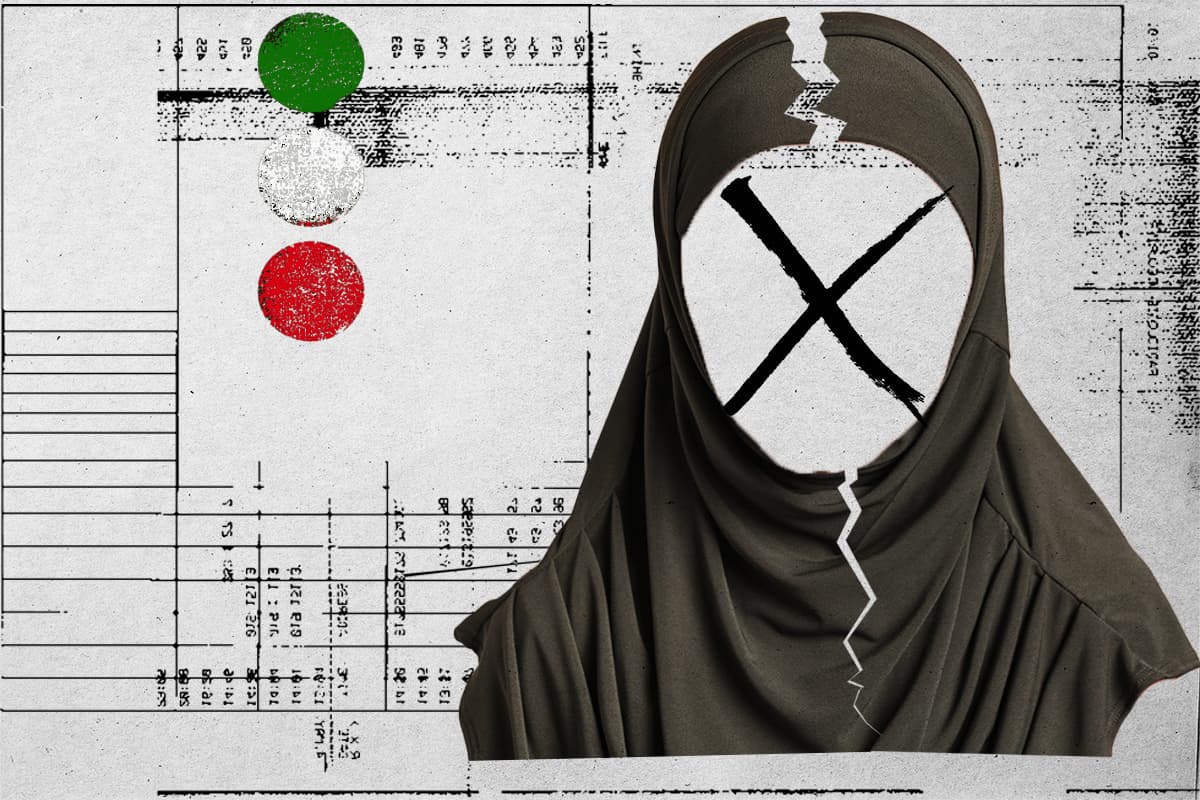The Islamic Republic’s supposedly “new” model for hijab enforcement, publicly sold as the Nur (“Light”) Plan, is essentially old wine in an old bottle with the label hastily written over by hand. It did not take long for a number of commentators to recognize it as the repackaged old morality patrols that terrorized average citizens on the street, almost always women. Those patrols had largely vanished after the nationwide uprising in the wake of the killing of Mahsa Amini in September 2022. One commentator wryly noted that the word nur rhymes with zur (force). Others have worried that the regime, having despaired of domestic support, is now recruiting non-Iranians to help with hijab enforcement.
In keeping with the nature of such things in the Islamic Republic, the hijab patrols have returned with a vengeance, renewing scenes of distressed women screaming in anguish and rage as they are hauled away in paddy wagons. Again, in keeping with tradition in today’s Iran, much of the state’s dealings with the citizenry have an element of the dramatic. For instance, clerics rallying in Qom in support of the re-imposition of hijab donned battle fatigues as if to signal to the citizenry that they were soldiers in the Islamic Republic’s war to combat women as a security threat. One non-cleric in the crowd had a distinctly Afghan look. The contradictions in official positions on the issue, even from a single individual, are enough to make one’s head spin. For instance, many have noted that the January 2023 replacement of Hosein Ashtarifard as police commander by the hardline Ahmadreza Radan signaled a definite intention to crack down on hijab violators, an expectation that Radan has promised to fulfill with no compromise or retreat. And yet at the very Qom gathering that featured the combat-ready clerics (turbaned rather than helmeted), he sounded almost conciliatory, noting that women and girls who do not wear hijab are not the enemy. Ahmad Alamolhoda, the hardline Friday prayer leader of Mashhad, also muddied the waters, reminding the people that they could not be mere spectators as the state moved to re-impose hijab on unwilling women. For Alamolhoda and fellow hardliners, the “people” are those who think like them, the kind that may potentially be galvanized by the dog whistles that he and others have been using to bring them to the aid of the police as they arrest hijab violators. Female MP Zohreh Lajevardi, the daughter of the late Asadollah Lajevardi whose dour demeanor and feared comportment as warden of Evin Prison struck terror into the hearts of dissidents in the early 1980s, takes an expectedly inflexible position. It is the Islamic Republic’s “compromises” on the issue, she believes, that have led to what she considers the sorry state of women’s public appearance in Iran. Perhaps she is nostalgic for the days when people like her father were in authority.
Religious leaders are under pressure from Iran’s hardliners to come out unambiguously on the side of enforcement. The religious establishment, however, is proving uncanny and adept at negotiating the delicate issue. Most of Iran’s senior Shiite clerics have remained largely silent, with a few odd reminders that hijab is indeed an Islamic imperative but need not be enforced in the manner of the Islamic Republic. Hosein Ansari-Rad, a reformist cleric who has served in various political roles, cautions against the kind of enforcement that damages the reputation of Islam and turns people against it. On his Telegram channel, the dissident Mahdi Nasiri, who was somewhere between Tehran and Calgary, Canada, posted a short written piece by Mohammad-Hosein Mahdikhani expressing dismay at the use of immigrant Afghan men to swell the supposedly pro-hijab crowds. The writer hoped Commander Radan would not put truncheons in the hands of these men with which to beat Iranian women. A social media user posted the following on X: “The clerics who refused to serve in the military made a pact with Afghan foreigners who refused to fight the Taliban to put on combat fatigues and fight the people of Iran. Leave alone the history of Shiism, there is nothing quite like you in the history of humanity.” If, indeed, the Nezam is using Afghans in this way, it is bound to not only feed the prevalent xenophobia in society, it is also likely to give xenophobes ammunition.







